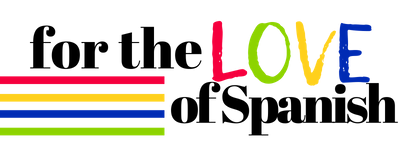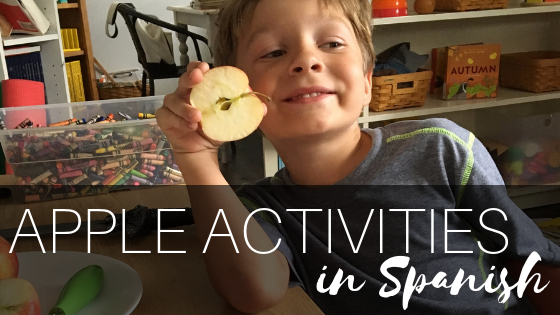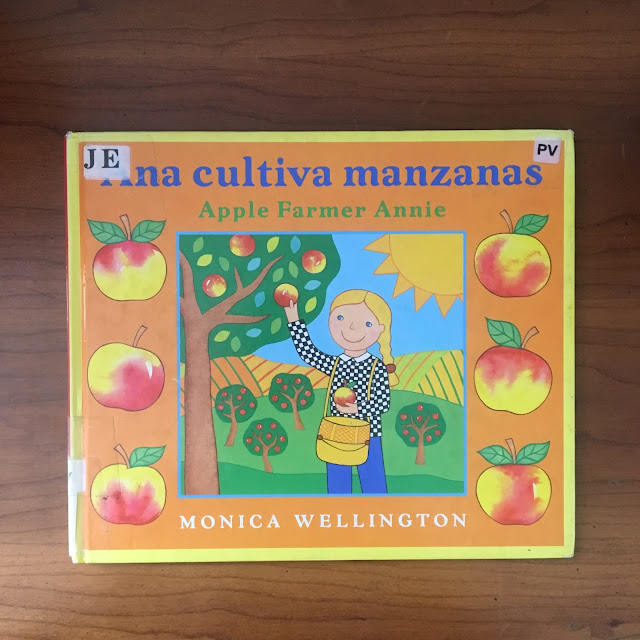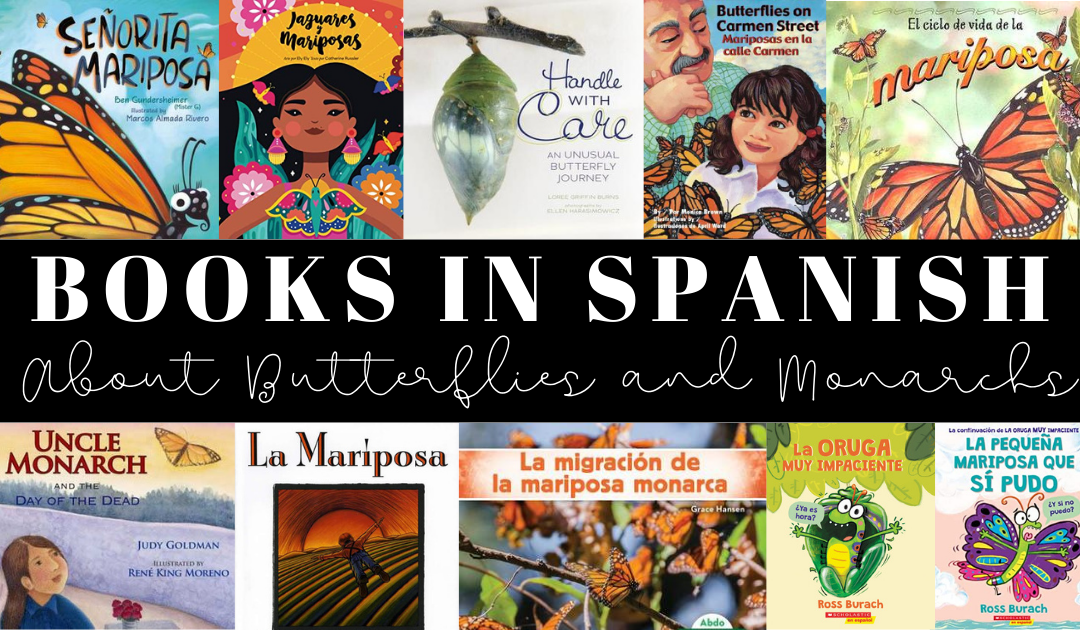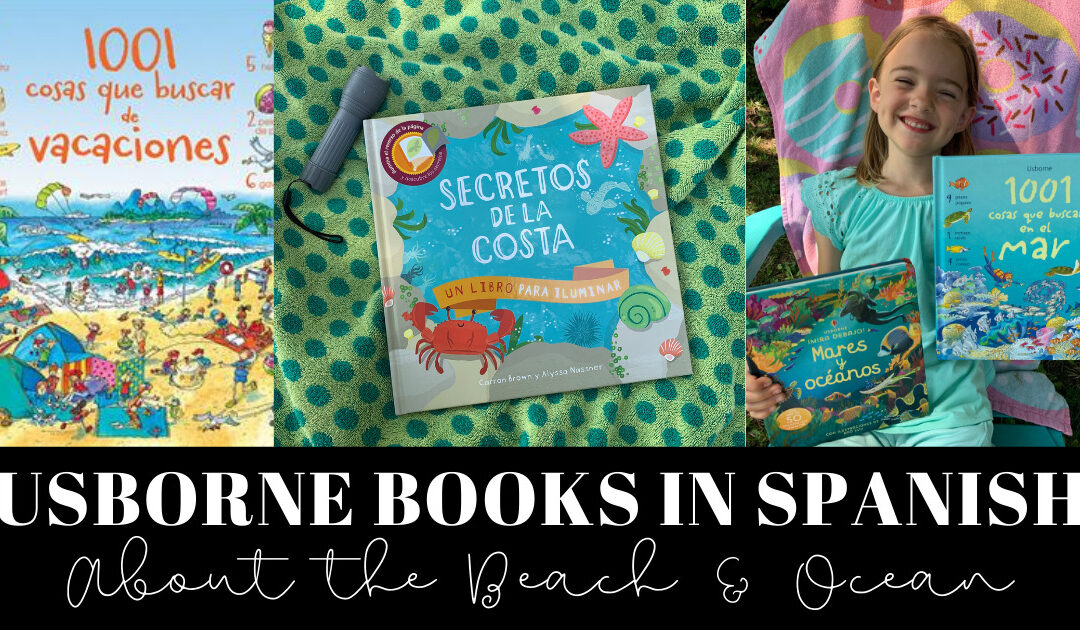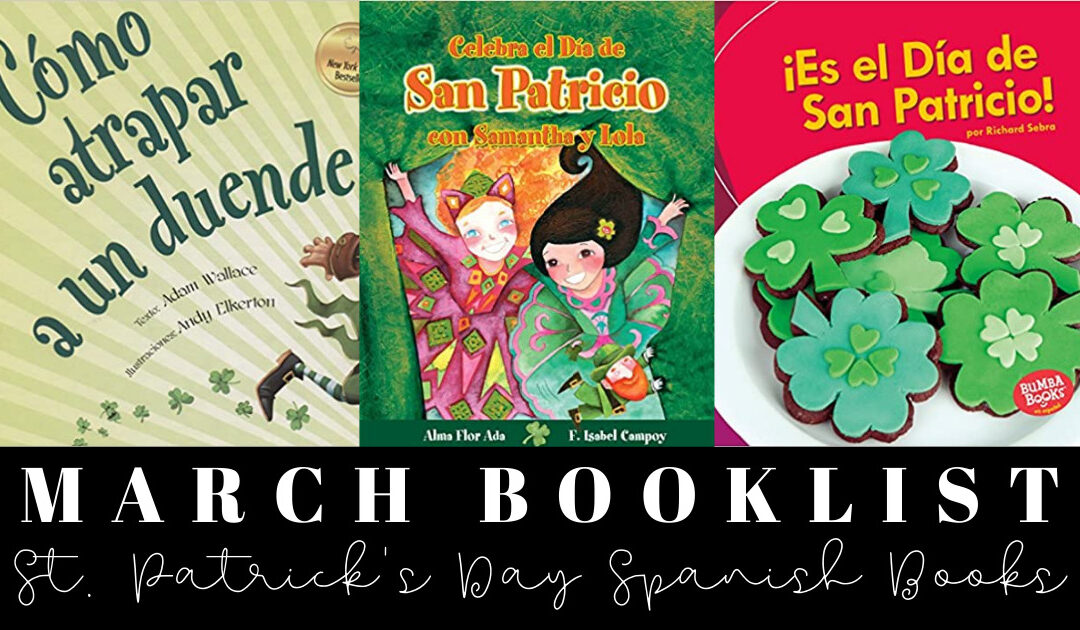- Books About Apples in Spanish
- Apple Activities in Spanish
- Apple Mini-Book in Spanish
- Apple Anatomy Printable
- Apple Videos in Spanish
If you haven’t already, make sure you check out my booklist for fall-themed Spanish picture books. I bet you can get some of them from you library! Ana cultiva manzanas (Apple Farmer Annie) is one of the books from the list, and we check it out from our library every fall.
My 3- and 4-year-old loved this one, and requested that I read it multiple times in a row. I really do like bilingual books because we can read it a few times in English, and then my kids don’t mind if I read it to them in Spanish.
Even better if they are phrases you can use all the time so your kids will get used to hearing them. For example, when you read the page pictured above you could say: “Did you know the word for apple tree in Spanish is manzano? ¿Cuántos manzanos hay? How many manzanos are there? ¡Contemos! Let’s count! Uno…dos…tres…”
Word for word, that’s an example of how I talk with my kids when we are reading a Spanish or bilingual book.
You can also simply point to the pictures you see on the pages and say things like, “¡Mira! Un pájaro.” (Look! A bird.)
One thing I really love about this book is how many learning themes can come from it. You can count how many apples you see, or how many apple trees she has in her orchard. Annie sorts through the apples and you could do an activity of sorting through apples of different colors. Annie takes her most beautiful apples to a farmer’s market. You could set up a pretend apple stand and play in Spanish with money. Kids can practice asking ¿Cuánto cuesta? (How much does it cost?) The possibilities are endless, and once you read the book I’m sure you’ll have many ideas come to you!
One quick and super easy activity you can do when learning about anything in Spanish is to tape the beginning letter of the word (or even tape the entire word) on a table or floor, and have your kids use found objects to build the letter. They can also simply trace the giant letter with their fingers. This works great for kids who are little and ready to learn letters and handwriting, but who still need more practice with fine motor skills. Making letters big keeps it fun and approachable for them.
Of course it would have been awesome if I had some sort of object that starts with the letter M, like these cute apple counters!
I wrote the word manzana on our blackboard, and we practiced saying it together. You could take this opportunity to practice the syllables of the word. Clap your hands once with each syllable.
We also talked about other words that start with M in Spanish. Like mariposa or mamá!
Next, I purchased this lovely printable from the Escuelita Montessori shop on Etsy. I went over it with my 7-year-old. As we learned the words on the poster, we found that part on a real apple as well. We also watched this sweet video on YouTube made by a boy about the parts of an apple and a peach.
The best part was eating it. 😉
Finally I made this little mini book about apples and colors: “Los colores de la manzana.” I like to make books that have repetitive sentences where one thing changes throughout. It also helps if it is silly! My kids don’t notice it’s a lesson if we are being silly!!
In this book we can practice using the indefinite article: a or an. In Spanish that is una when we’re talking about an apple because apple is feminine. The changing part in this phrase is the color word.
This page above says “A pink apple….A green apple.” So without even having to tell them, kids will be able to isolate the changing word and understand that it is the color, because the pictures reflect the change.
Kids also get to practice hearing how the adjective word comes after the noun in Spanish instead of before the noun like in English.
Then the story gets silly, and we get to have fun learning different ways to say, “That’s silly!” in Spanish.
Or on the last page we get to read how to say the work “Yuck!” in Spanish. And the last pages asks the child, What color of apple is your favorite? Kids can color in with whatever color they choose!
Of course I’m sharing this printable with you! And if you download it, there is a pronunciation and translation guide at the beginning. To print it in booklet form like this, you’ll just need to open the PDF with Adobe Reader, then change the print settings to booklet. Make sure you also have the settings set to print on both sides of the paper.
